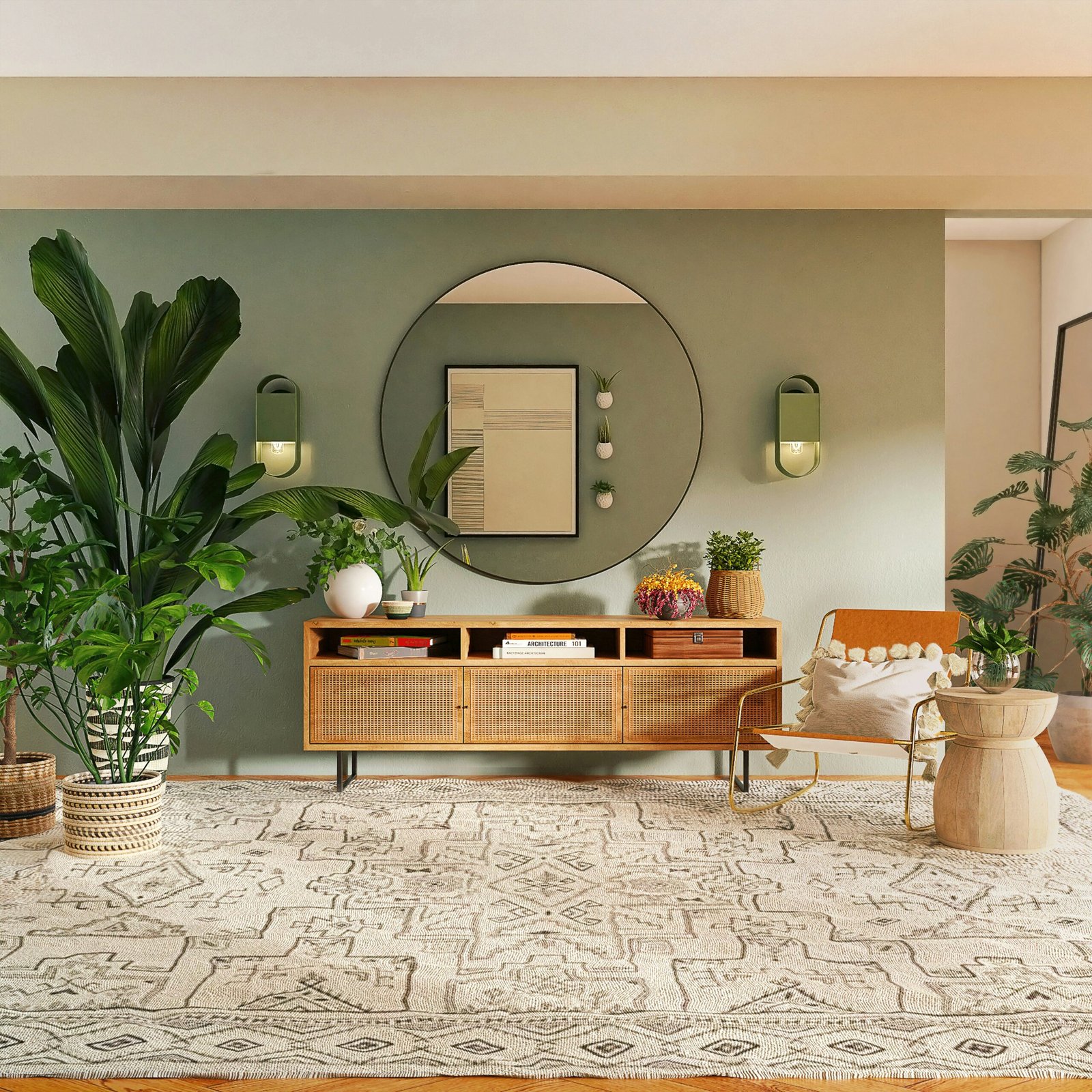Explore fresh and inspiring interior design ideas in the fourteenth part of our ‘Small Dreamy Family Homes’ video series. Learn how to maximize small spaces with multifunctional furniture, incorporate bold patterns and colors, and enhance your home with natural light and indoor plants. Perfect for new projects or revitalizing your current space, these tips will help create a blissful ambiance in your family home.
Introduction to Part 14: A Journey Through Dreamy Family Homes
Welcome to the 14th installment of our enlightening series, “Small Dreamy Family Homes.” In this chapter, we explore an enchanting collection of over fifty-five innovative design ideas that seek to redefine the essence of contemporary family living. This part focuses on ingenious and harmonious solutions for both the interiors and exteriors of small family homes, showcasing how thoughtful design can elevate even the most compact spaces into luxurious, dream-worthy sanctuaries.

Throughout this journey, you will discover transformative design concepts tailored for various home environments. Whether it’s creating a cozy patio oasis, optimizing a functional hallway, designing a serene bedroom retreat, or crafting a multifunctional open space, Part 14 promises to reignite your creative spark with a vibrant blend of practicality and aesthetic beauty. Each section focuses on maximizing available space without compromising on the elegance and comfort that every family home deserves.
Please read our article watch the newly uploaded video from our YouTube channel:
“Grig Stamate – Interior Design Solutions”
https://www.youtube.com/@GrigStamate
Small Dreamy Family Homes – New Creative Interior Design Ideas, #14 (video)
Here, you can see other related videos from our channel:
Small Dreamy Family Homes – Creative Interior Design Ideas, #12 (video)
Small Dreamy Family Homes – Creative Interior Design Ideas, #13 (video)
In a world where space is often at a premium, the significance of smart design cannot be overstated. This segment delves into the intricacies of space utilization, offering solutions that integrate form, function, and flair seamlessly. You’ll encounter a plethora of ideas that employ clever storage solutions, innovative lighting options, and spatial configurations that enhance the living experience while maintaining a harmonious balance of style and utility.
Prepare to be inspired by homes that harmonize contemporary needs with timeless design principles, demonstrating that limited space can indeed translate to limitless potential. From interiors that radiate warmth and comfort to exteriors that blend seamlessly with their surroundings, each example in this collection underscores the power of design to transform the ordinary into the extraordinary. Join us as we unfold the magic of small dreamy family homes in this vibrant new chapter.
Innovative Ideas for Small Indoor Spaces
Designing small indoor spaces presents an opportunity to forge a delightful blend of functionality and style. Maximizing space usage without sacrificing comfort requires innovative approaches that marry clever design tricks with strategic layout planning, particularly in the living room, dining area, and kitchen. A vital starting point is to incorporate modular furniture, which offers flexibility and adaptability. Pieces that transform or serve dual purposes—like a sofa that doubles as storage or a dining table that folds against the wall—are quintessential in creating a harmonious and versatile home environment.
Another crucial aspect is the clever use of storage solutions. Floating shelves, under-bed compartments, and built-in cabinets are excellent methods to store belongings without encroaching on precious floor space. Additionally, utilizing vertical space through tall bookshelves or hanging racks can help keep the home neat and tidy while preserving open areas for movement.
Effective transitions between living spaces add to the fluidity of a small home. Open floor plans where the kitchen flows seamlessly into the dining area or the living room can make tight quarters appear more expansive. Employing consistent flooring, such as hardwood or tiles, and unified color schemes can foster a sense of continuity. Creating zones with area rugs or distinct furniture arrangements also demarcates different functional areas without the need for physical barriers.
Color schemes and lighting play pivotal roles in enhancing the aesthetics and perception of space. Light, neutral colors on walls and furniture tend to reflect natural light better, making rooms feel airier and more open. Accent walls, brighter cushions, and vibrant art pieces can infuse a dynamic and warm ambiance. When it comes to lighting, a mix of ambient, task, and accent lighting can cleverly illuminate the space. Wall-mounted fixtures, floor lamps, and under-cabinet lights are ideal for conserving floor and counter space while ensuring the interiors are well-lit.
Textiles are another subtle yet powerful tool in small space design. Lightweight curtains, plush throws, and strategically placed rugs add layers of texture and softness to the interiors, making every corner feel thoughtfully designed and perfectly cozy. By integrating these design principles, small indoor spaces can transform into functional, stylish, and inviting homes.
Transforming Outdoor Areas into Family Havens
The transformation of outdoor areas into family havens is an art that invites nature into daily living. By optimizing patios, balconies, and gardens, you can extend the comfort and functionality of your indoor spaces into your home’s exterior. Creative design ideas can repurpose these outdoor areas, making them welcoming extensions of your living environment – perfect for relaxation, entertainment, and family activities.
A trend that stands out is the rise in multifunctional outdoor furniture. Pieces that serve dual purposes—like benches with storage or tables that convert to desks—are revolutionizing the way we use outdoor spaces without compromising on aesthetics. Sleek, weather-resistant materials such as teak, aluminum, and synthetics offer durability while maintaining a chic, modern look. Cushions and rugs in vibrant, natural tones add a cozy, inviting feel, mirroring the comfort of indoor living rooms.
Sustainable landscaping is another key element in creating these outdoor family havens. Native plants and water-efficient gardens not only support local ecosystems but also reduce maintenance efforts. Incorporating vertical gardens and herb planters can enhance the greenery, optimizing space, and providing a practical, edible garden option. Moreover, solar-powered lighting and water features are gaining popularity for their ecological benefits and ability to create a serene atmosphere.
Innovative ideas don’t stop at practical purposes; they embrace the aesthetic and sensory experiences. Incorporate soundscapes with wind chimes or small water fountains to add tranquility. Creating zones within your outdoor areas, such as a tranquil reading nook, a vibrant play corner, and a cozy fire-pit seating area, can cater to varied activities and moods, making the outdoors as versatile as the indoors.
By seamlessly integrating nature into your living spaces, you can enhance the appeal of your home, making your outdoor areas as dreamy and functional as your indoor rooms. From stylish patio setups to serene garden corners, the possibilities are boundless for turning your outdoor space into a family haven.
Creating a Harmonious Flow in Open Spaces
Open spaces have become a hallmark of contemporary interior design, particularly in small family homes where maximizing every square foot is essential. These areas create a sense of expansiveness and unity by combining the living room, dining area, and kitchen into one seamless environment. To achieve this cohesive yet functional layout, certain design principles must be carefully applied.
Begin by considering the flow of movement within the space. Arrange furniture in a way that encourages natural pathways and promotes easy interaction between family members. For instance, placing the dining table adjacent to the kitchen island can facilitate seamless transitions during meal prep and dining. Similarly, positioning seating areas to face each other fosters communication and connection, making the living room a central hub for family activities.
Visual cues are instrumental in subtly differentiating various zones within an open-plan layout. Furniture placement plays a significant role here; for example, a sofa can be used to demarcate the living area from the dining space. Rugs, lighting, and decor elements also contribute to defining these zones. A pendant light over the dining table or a strategically placed area rug can create visual boundaries without the need for physical walls.
Balancing openness with a sense of intimacy is another critical aspect. While open spaces can feel airy and free, it’s crucial to incorporate elements that provide coziness and warmth. Incorporating textures through cushions, throws, and curtains adds a homely feel, while the strategic use of colors can create a visually pleasing environment. Soft, neutral tones can unify the space, while pops of color in accessories or accent walls add personality and a touch of warmth.
Ultimately, the goal is to create a harmonious balance that offers both the spaciousness of an open-plan design and the comfort of a traditional home. Intelligent layout choices and thoughtful decor can transform an open space into a functional and inviting family haven.
Other related posts from our website:
Let’s see here, three of them:
https://howtobuildahouseblog.com/small-dreamy-family-homes-nordic-style-2/
https://howtobuildahouseblog.com/small-dreamy-family-homes-new-creative-interior-design-ideas-8/
https://howtobuildahouseblog.com/small-dreamy-family-homes-new-creative-interior-design-ideas-13/
Thank you so much for your attention.
We also sincerely hope you like our ideas from this post, and you have also enjoyed our uploaded YouTube video.
See you next time at another article. Thank you so much for your time. Bye now!


